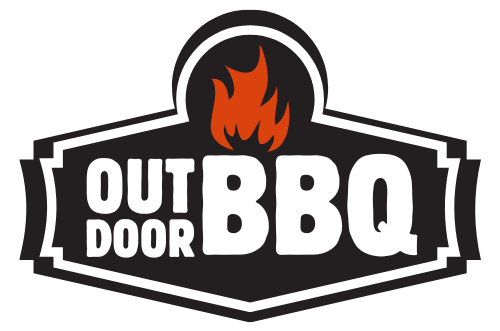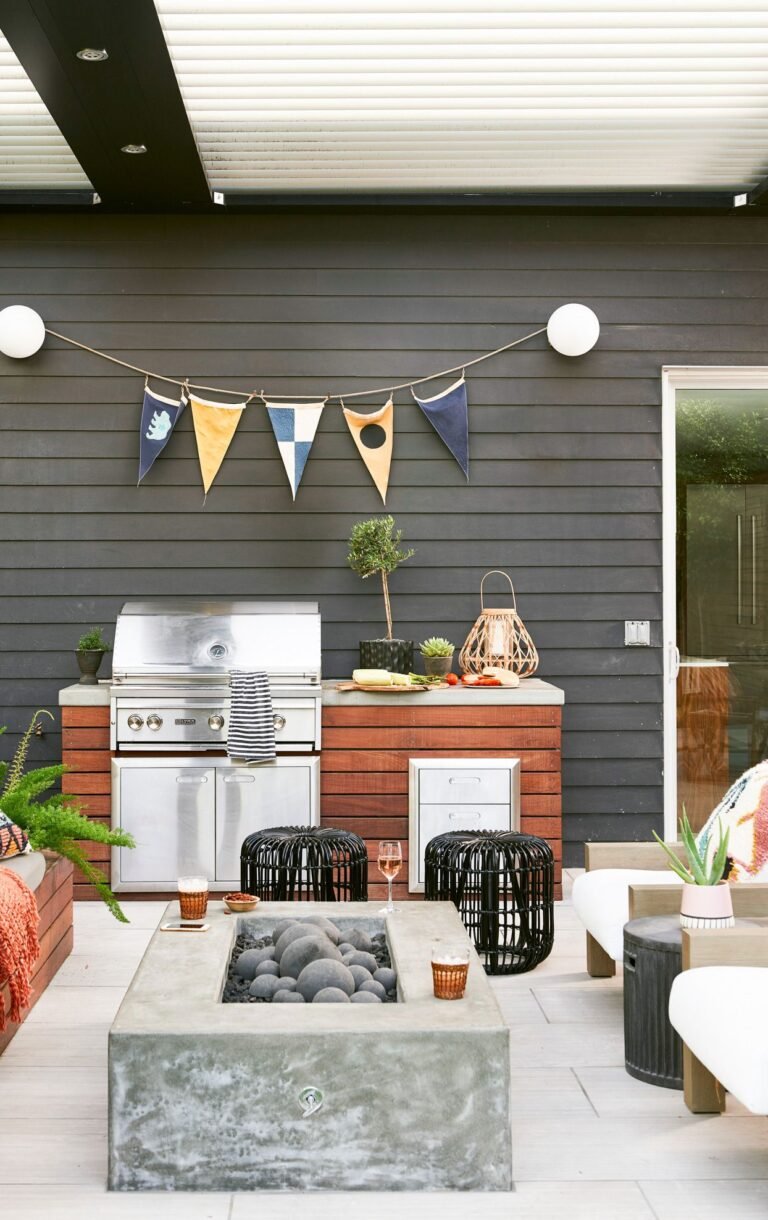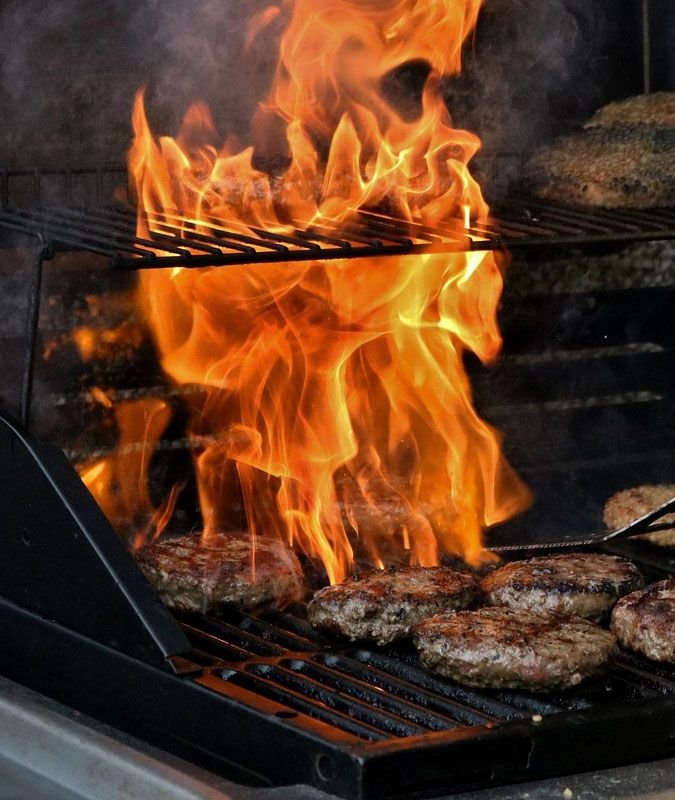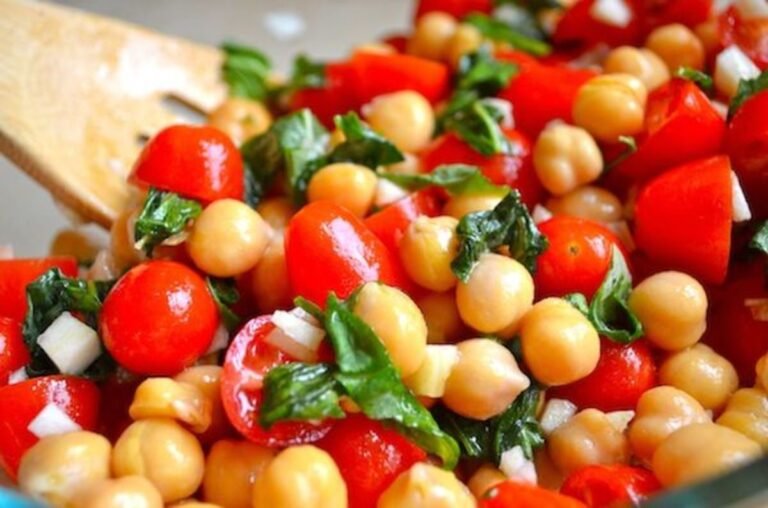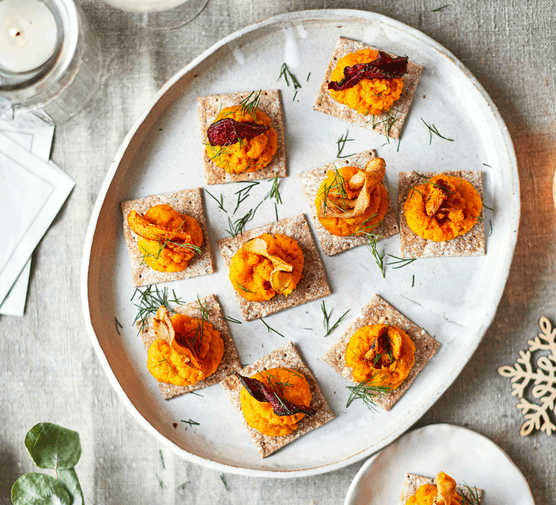Mastering the art of grilling requires knowing the right temperatures. It’s the secret to perfectly cooked meals.
Imagine biting into a juicy steak, grilled to absolute perfection. The sear is just right, and the flavors burst in your mouth. This is not a matter of chance; it’s all about precision in grilling temperatures. Whether you’re a seasoned grill master or just starting out, understanding the correct heat levels is crucial for every type of food you toss on the grates.
Grilling isn’t just about firing up the barbecue; it’s a culinary craft that hinges on the subtleties of temperature. From tender vegetables to thick cuts of meat, each item has its ideal heat setting. This guide is here to help you navigate the heat, so you can wow your friends and family with your grilling prowess. Get ready to transform your cookouts with the ultimate grilling temperature guide, your roadmap to delicious, perfectly grilled dishes every time.
The Art Of Grilling
The art of grilling is simple yet complex. It’s about turning raw ingredients into amazing meals. Think of it as a dance with fire and flavor. The grill’s heat transforms food, giving it that unique taste we love. Mastering the perfect grilling temperature is key. It’s not just about cooking; it’s about crafting an experience.
Grilling Vs. Barbecuing
Grilling and barbecuing often mix up, but they’re different. Grilling means cooking food quickly over high heat. It’s fast and gives meats a nice sear. Barbecuing is slower and uses lower heat. It’s best for tender, fall-off-the-bone dishes. Both methods have their place in the art of outdoor cooking.
Essential Grilling Tools
Great grilling starts with the right tools. A sturdy spatula flips burgers with ease. Tongs turn meat without piercing it. A good brush spreads sauces evenly. And a reliable thermometer checks if food is cooked just right. With these essentials, you’re set for grilling success.
Types Of Grills
Grilling is a favorite cooking method for many. Different grills offer unique flavors and experiences. Let’s explore the types of grills available.
Charcoal Grills
Charcoal grills use charcoal briquettes. They add a smoky flavor to food. These grills need time to heat up. They are great for outdoor cooking.
Gas Grills
Gas grills are easy to use. They heat up quickly. Most use propane or natural gas. Perfect for quick and efficient grilling.
Electric Grills
Electric grills work with electricity. They are good for indoor use. No flames mean they’re safer in small spaces. They still make tasty meals.
Meat Preparation
Before the grill heats up, the secret to delicious meat begins. Proper meat preparation sets the stage for perfect grilling results. From marinating to seasoning, each step adds flavor and ensures a tender, juicy meal. Take time to prep meat the right way and taste the difference it makes.
Marinating Basics
Marinating does wonders for meat. It tenderizes and infuses flavor deep inside. Use acids like vinegar or citrus juice in your marinade. They break down tough fibers. Combine with oils and herbs for balanced taste. Always marinate in the fridge, not at room temperature. Give it time, at least 30 minutes for small cuts, and overnight for larger pieces.
Seasoning Tips
Seasoning brings out meat’s best qualities. Use salt and pepper as your base. Salt before grilling to enhance flavors. Mix in spices like garlic powder or paprika for extra zest. Dry rubs work great for a crusty, flavorful edge. Just remember, less is often more. Don’t overpower the natural taste of the meat.
Temperature Mastery
Grilling isn’t just an art; it’s a science. Proper temperature control is key to perfect meat every time. Let’s dive into creating the ultimate meal with precision heat.
Understanding Heat Zones
Grill experts know that heat isn’t uniform. Creating heat zones is essential. Here’s how:
- Direct zone: High heat for searing.
- Indirect zone: Low heat for slow cooking.
Arrange coals on one side for charcoal grills. For gas grills, adjust burners. This gives you control over the cooking pace and final result.
Thermometers And Tech
Guesswork won’t do. Use a meat thermometer for accuracy. Check these types:
- Instant-read: Quick temperature checks.
- Probe: Constant temperature monitoring.
Smart tech thermometers now offer apps. They alert you to the perfect doneness. No more overcooked steaks!
Remember, the goal is juicy, tender, and safe to eat. Master these tips, and impress with every grill.
Beef Grilling Temperatures
Knowing the right beef grilling temperatures is key. It ensures your beef is safe and tasty. Let’s look at the best temperatures for steaks, burgers, and ribs.
Steaks
For steaks, temperatures vary by doneness. Use this guide:
| Doneness | Internal Temperature |
|---|---|
| Rare | 125°F (52°C) |
| Medium Rare | 135°F (57°C) |
| Medium | 145°F (63°C) |
| Medium Well | 150°F (66°C) |
| Well Done | 160°F (71°C) |
Check the steak with a thermometer.
Burgers
Burgers need a higher temperature. Aim for:
- Ground Beef: 160°F (71°C)
This makes burgers safe to eat.
Ribs
Ribs take time. Cook them slow and at a low temperature.
- Beef Ribs: 203°F (95°C)
Use a thermometer to check. This makes ribs tender.
Poultry Perfection
Grilling poultry to perfection is an art. It’s all about the right temperature. This guide ensures juicy and safe-to-eat poultry every time. Let’s get those grills fired up and dive into the specifics for chicken, turkey, and duck!
Chicken
Perfectly grilled chicken is a crowd-pleaser. Aim for a temperature of 165°F. Always use a meat thermometer to check. Breasts need 6-8 minutes per side, while thighs require a bit more time. Keep the lid down to maintain a steady heat.
Turkey
Turkey requires patience and a watchful eye. The magic number for turkey is also 165°F. For a whole turkey, plan for about 15 minutes per pound. Turn it occasionally. This ensures even cooking and that golden-brown skin everyone loves.
Duck
Duck is known for its rich flavor. Grill breast side down first. Duck breast is best at 135°F to 140°F for a medium-rare finish. The skin should be crispy. Rest the meat before serving to lock in those flavors.
Seafood And Fish
Mastering the art of grilling seafood and fish unlocks a world of flavors. Each type of seafood requires a specific temperature for perfect results. Let’s dive into the perfect temperatures for whole fish, shrimp, and lobster tails.
Whole Fish
Grill whole fish at a moderate temperature. This ensures even cooking.
- Preheat grill to medium-high (375°F to 400°F)
- Oil fish and grill
- Cook until meat flakes easily
Shrimp
Shrimp cook quickly and need high heat. They turn from translucent to opaque as they’re done.
| Preparation | Grill Temperature | Cook Time |
|---|---|---|
| Skewered | High (400°F to 450°F) | 2-3 minutes per side |
| Directly on grates | High (400°F to 450°F) | 1.5-2 minutes per side |
Lobster Tails
Lobster tails need careful attention. They should be tender and juicy.
- Set grill to medium heat (350°F to 375°F)
- Place lobster tails shell side down
- Grill for about 8-10 minutes

Vegetables And Plant-based Proteins
Grilling isn’t just for meat. Vegetables and plant-based proteins shine too. They offer diverse flavors and textures. Perfect for any BBQ. Let’s dive into how to grill them right.
Vegetable Skewers
Easy and tasty. That’s what vegetable skewers are. Use a mix of colors and types. Think bell peppers, onions, mushrooms, and zucchini. Cut them into similar sizes for even cooking.
- Prep: Wash and cut your veggies.
- Season: Oil and your favorite spices are key.
- Skewer: Thread them on. Leave a little space between each.
- Grill: Over medium heat. Turn every 2-3 minutes. Cook until tender.
Grilled Tofu
Tofu can be delicious when grilled. The secret? Pressing and marinating.
- Press tofu for 30 minutes to remove excess water.
- Marinate for at least an hour. Use soy sauce, garlic, and spices.
- Grill over medium heat. About 4-5 minutes on each side.
Tip: Use extra-firm tofu. It holds up better on the grill.
| Food | Prep Time | Cook Time | Temperature |
|---|---|---|---|
| Vegetable Skewers | 15 mins | 10-15 mins | Medium |
| Grilled Tofu | 1 hr 30 mins | 8-10 mins | Medium |
Grilling Times And Techniques
Mastering grilling times and techniques can turn a good meal into a great one. Understanding the right way to grill different types of food ensures perfect results every time. Let’s dive into the essentials of direct versus indirect heat and the importance of resting meat.
Direct Vs. Indirect Heat
Two main methods exist for grilling: direct and indirect heat. Choosing the right one is crucial for delicious outcomes.
Direct heat is about cooking food directly over the flame. It’s fast and efficient, ideal for searing steaks or cooking burgers.
- Use for smaller, thinner cuts of meat
- High temperatures quickly cook the outside
- Creates a tasty sear with grill marks
Indirect heat involves cooking food away from the flames. It’s slower but allows for even cooking, perfect for roasts or whole chickens.
- Use for larger, thicker cuts of meat
- Low and slow cooking for tender results
- Prevents burning and drying out
Resting Meat
After grilling, resting meat is key. It allows juices to redistribute for maximum flavor and tenderness.
| Meat Type | Resting Time |
|---|---|
| Steaks | 5-10 minutes |
| Chicken | 10-15 minutes |
| Roasts | 15-20 minutes |
Always tent your meat loosely with foil during rest. This keeps it warm without cooking it further.
Safety And Maintenance
Grilling is not just about the thrill of the barbecue. It’s about safety and keeping things in good shape too. When you grill with care, you keep the fun going and everyone safe. Let’s dive into how to clean your grill and store leftovers properly. These tips keep your grilling safe and your food tasty.
Cleaning Your Grill
Keeping your grill clean is a must. It stops food from sticking and keeps flavors fresh. After grilling, let the grill stay hot for a bit. It burns off stuck food. Use a grill brush to scrub the grates. Don’t forget to empty the grease trap. It’s a simple step. But it stops fires and keeps your grill safe to use.
Storing Leftovers
Grill too much? No problem. Storing leftovers right keeps them safe to eat later. Cool food quickly. Within two hours is best. Use shallow containers. They cool food faster. Pop them in the fridge. This stops bacteria from growing. Remember, enjoy your leftovers within three to four days. Fresh is always best.
Advanced Grilling Tips
Ready to up your grilling game? Let’s dive into some pro tips that’ll have your friends and family in awe. Mastering the perfect grill requires more than just timing and temperatures. It’s about finesse and a touch of art. In this section, we focus on enhancing flavors and achieving those coveted grill marks.
Smoke Flavors
Smoke isn’t just a sign of grilling; it’s a flavor booster. Different woods mean different tastes. Here’s a quick guide:
- Hickory: Strong, bacon-like flavor.
- Apple: Sweet, fruity notes.
- Maple: Mild and slightly sweet.
For the best smoke, soak wood chips for 30 minutes before grilling. Add them to coals or a smoker box for gas grills. Keep the lid closed to trap the smoke.
Grill Marks
Those perfect grill marks are easy to achieve with a hot grill and patience. Follow these steps:
- Preheat your grill on high.
- Place your food down at a 45-degree angle.
- Don’t move it for a few minutes.
- Rotate 90 degrees, cook for the same time.
- Flip and repeat on the other side.
This method not only looks great but also helps to sear the food, locking in flavors.
Recipe Ideas
Master the grill with these tasty ideas. Perfect temperatures bring out amazing flavors. Whether you’re a meat lover or a veggie fan, there’s something for everyone. Let’s dive into two classic recipes that will make your next barbecue a hit!
Classic Bbq Chicken
BBQ chicken is a crowd-pleaser. Follow these steps for juicy results.
- Preheat your grill to a medium heat, around 350-450°F.
- Season chicken with salt, pepper, and your favorite BBQ rub.
- Place chicken on the grill. Cover.
- Grill for 5-7 minutes per side.
- Baste with BBQ sauce in the last few minutes.
- Cook until internal temp is 165°F.
Let it rest for a few minutes before serving.
Grilled Vegetable Medley
Grilled veggies add color and nutrition to any meal.
| Veggie | Prep | Grill Time |
|---|---|---|
| Zucchini | Slice lengthwise | 4-5 minutes per side |
| Peppers | Cut into wide strips | 3-4 minutes per side |
| Onions | Cut into rings | 2-3 minutes per side |
Toss them with olive oil, salt, and pepper. Grill until charred and tender. Enjoy your vibrant, tasty dish!
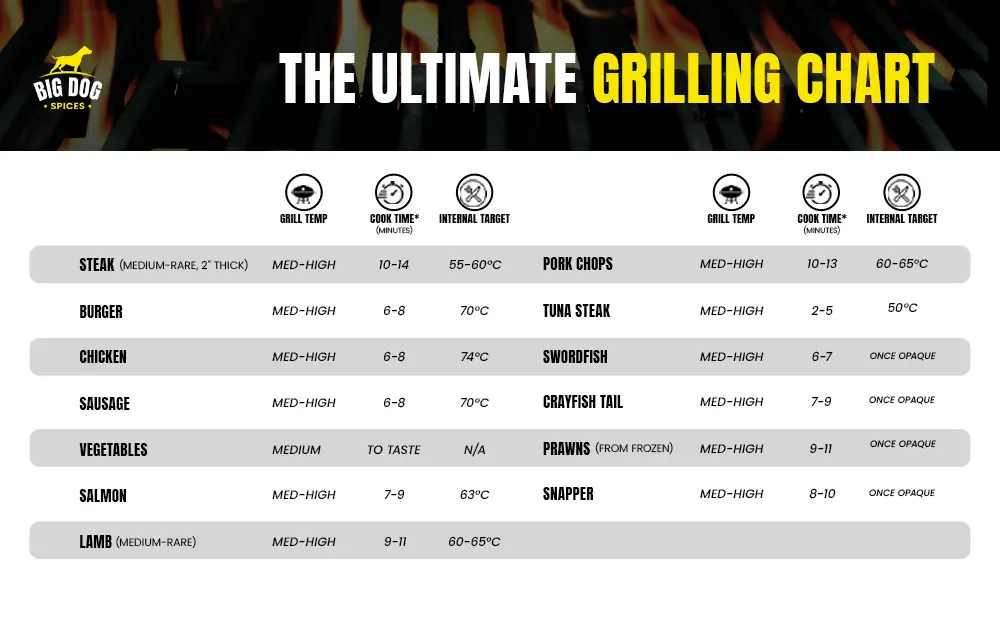
Frequently Asked Questions
What Is The Perfect Grilling Temperature For Steak?
For a perfect steak, aim for a high temperature between 450°F to 500°F. This allows for a seared crust while keeping the inside juicy. Cook to your preferred doneness: 135°F for medium-rare, 145°F for medium, and 160°F for well-done.
How Long Should I Grill Chicken For Safety?
Grill chicken until it reaches an internal temperature of 165°F. This usually takes about 8-12 minutes per side on medium heat. Use a meat thermometer to ensure safety without overcooking.
Can I Use A Meat Thermometer For Fish Grilling?
Absolutely! Aim for an internal temperature of 145°F when grilling fish. It’s usually reached in 4-6 minutes per side over medium heat. A thermometer prevents overcooking, ensuring moist, flaky fish.
What Temperature Should I Set For Grilling Vegetables?
Vegetables are best grilled over medium heat, around 350°F to 450°F. This range caramelizes the exterior while cooking them through without burning. Most vegetables grill well within 5-10 minutes, turning occasionally.
Conclusion
Mastering the right grilling temperatures means juicier steaks and perfect burgers. Remember these tips for your next barbecue. Keep meats moist and veggies crisp. Use a thermometer, no guessing. Grill like a pro every time. Share this guide, help friends grill with confidence.
Happy grilling!
